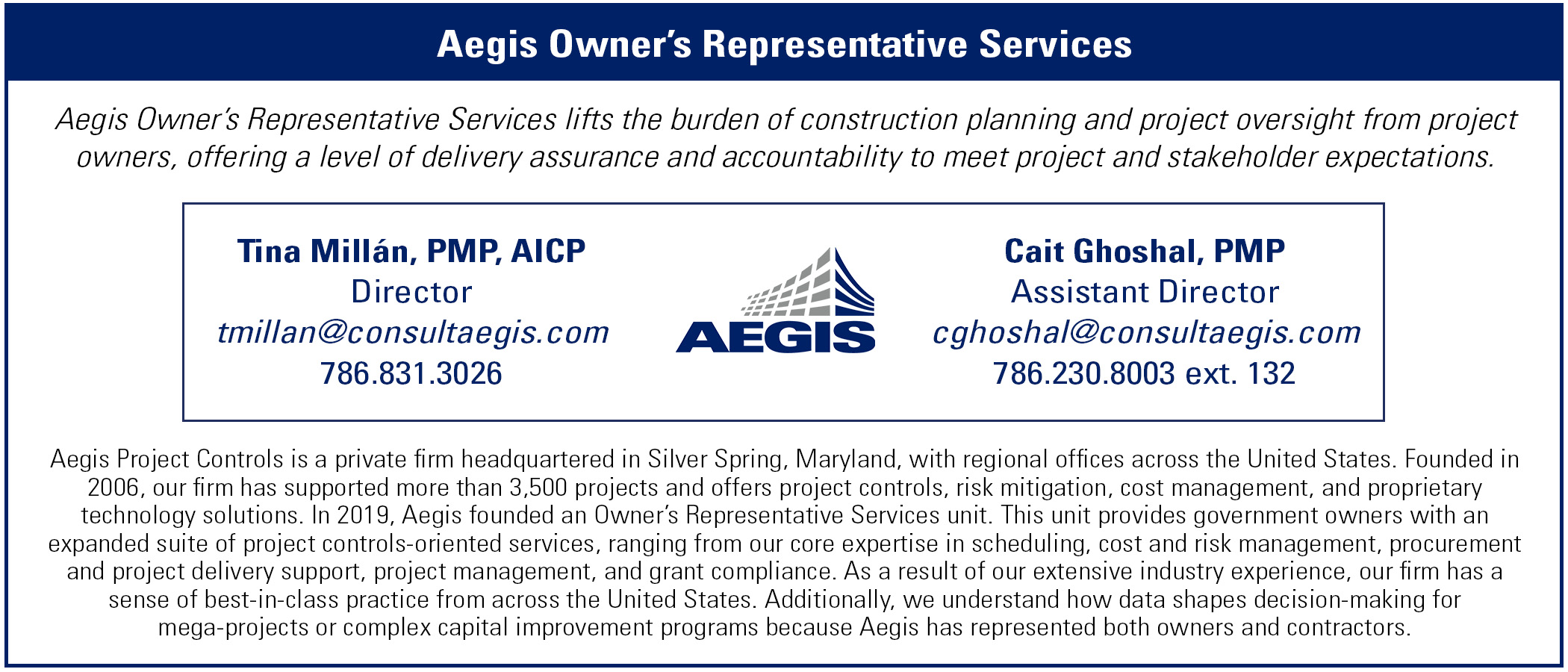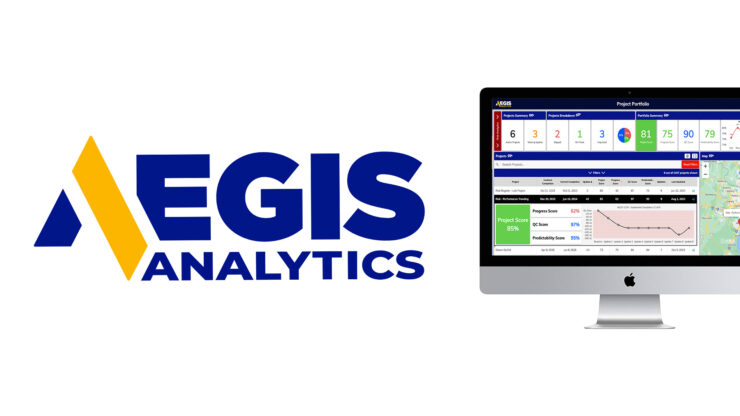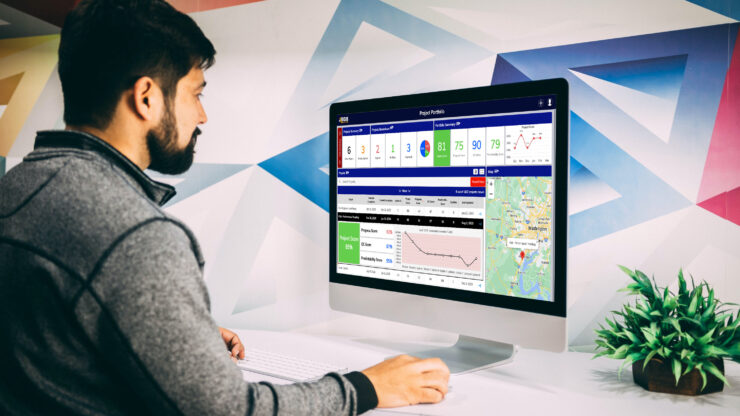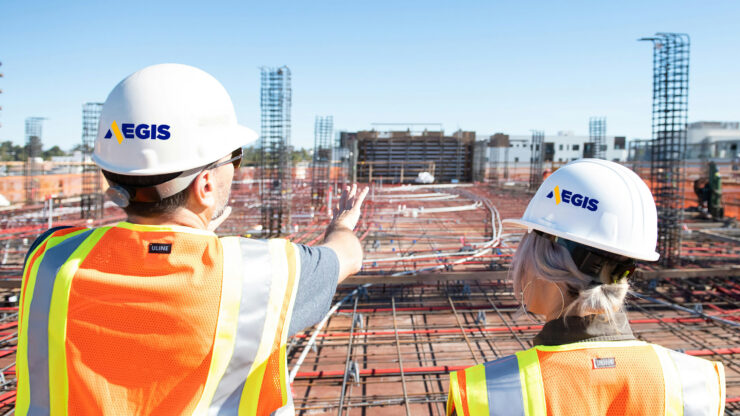Managing Large Infrastructure Projects: How Owners and PMOs Can Use Data Analytics to Drive Decisions

Managing Large Infrastructure Projects
How Owners and PMOs Can Use Data Analytics to Drive Decisions
Tina Millán, Cait Ghoshal, Austin Scheiber
Large infrastructure projects are fundamentally shaped by the project contract and the owner’s specifications. In turn, the owner uses data analytics to assess whether the contractor has met the contract terms and specifications. In this article, data analytics refers to information on schedule, cost, and risk that project controls professionals organize to show trends and progress. An owner relies on project controls data to illustrate the status of a given construction project. In this article, we discuss how to use data within Program Management Offices (PMO’s) to manage mega-projects or a portfolio of projects.
Most owners and their advisors encounter problem projects that fall deeply behind schedule and have unmanaged costs resulting in costly claims and lengthy dispute resolution processes. When the owner and contractor come together to negotiate how to finish the project and cut losses, usually parties point fingers at each other. Often, the owner and contractor are building a forensic case to find fault, each relying on different data to explain the situation. All, however, can agree that one – if not both – parties misinterpreted the contract, leading to the challenge at hand. The project contract was clear (enough) for all parties to sign at the project’s beginning. How did the contract become unclear between the close of transaction and the start of design, construction, and beyond?
When an owner and a contractor track different data points on schedule, cost, and risk management, it creates competing perceptions of project progression. This conflict clouds the owner and contractor’s decisions – and ability to agree – how best to move forward with the project. To manage performance, each party collects different data because there is a misalignment between the contract language, the specifications, and the project level controls implemented by the contractor and the program/portfolio view of controls from the Owner’s and PMO’s perspective. This disconnect becomes exponentially more challenging to manage when owners execute large-scale, technically complex programs or multiple programs in a portfolio.
Further complicating matters, government owners may be managing infrastructure projects outside of their core competencies. For instance, a transit agency may be attempting to manage the construction of a rail maintenance facility. A transit agency typically invests its resources into its primary mission: a transit system rather than building new facilities. A government owner’s challenge is to seamlessly integrate the contact terms into the project controls design. When data analytics and the contract are integrated, the owner and its PMO gain information for the oversight and management of a construction project for an organization focused on operations.
Owners establish PMOs to oversee whether the contractor has met the obligations of the project contract and specifications. A PMO manages an owner’s portfolio of projects, especially if those projects are interrelated and dependent on completing other work. A PMO is also used to manage a specific mega-project. These offices’ goal is to establish a project control program that translates the contract into specific data points monitored throughout the construction period and adapts to different types of scope (civil, industrial, vertical, utilities, etc.). Work completed on-site, as an example, is reported by contractors and verified by the owner’s project manager. A dashboard monitors those data points showing the project’s status in real-time, ensuring the work’s progress as planned.
As construction management technology and enterprise software solutions have become more accessible, owners use data analytics to evaluate contractor performance. Performance dashboards and status reporting capture the data points rendered by project controls – schedule, cost, scope and risk. Data, however, requires interpretation and understanding. Whether a project or program is going well or not is based on data sourced through project controls, which express a project’s performance to contract terms.
Both the owner and the contractor have the same goal of completing the project, and ideally, both are evaluating change and performance using the same terms and measurements. An owner will be reluctant to access contingency dollars if it disagrees with the contractor’s analysis of changes required that go beyond the project’s contractual scope. Here is an example process by which impartial measurable data analytics are designed to help an owner and its contractor see an unbiased representation of a given project:
- Successful projects will clearly define in the contract and specification what constitutes data analytics, what metrics will be measured, and the outlying effects of the metrics. To ensure this, reliable data analytics is first and foremost a product of reliable data sources. The foundation of accurate and informative analytics is to ensure that a “data first” mindset is embedded into your execution processes. This entails that the underlying data sources are updated consistently in a timely manner, continually verified with quality control checks, and require minimal effort to maintain (preferably only require a single point of entry) to ensure that the project management information system (PMIS) is the single source of truth for the data.
- Once a data source is considered reliable, use the available data to define simple key performance indicators (KPIs) and metrics that are easy to understand, yet provide a clear assessment of a business need. Developing a KPI to answer a business need is more important than developing a KPI based around data automation requirements or limitations.
- In parallel, the infrastructure to extract the data from the data source (or project management information source, PMIS) needs to be established. The goal of this infrastructure is to move the data to an easily accessible location and structure the data in a tabular format. This allows for the ability to access and manipulate the data to meet the reporting requirements.
- The final step is to automate and build your analytics visualizations, reports, and dashboards. Ensure that the top of the visualizations provide clear and evident takeaways with minimal navigation, while allowing the user to drill down to more detailed information if necessary.
There is a tension between the contractor and the owner that occurs when parties disagree on the project’s status. In reality, both the contractor and the owner want to get the project done on time and budget. Progressing and completing the work is the end goal for all parties. Not doing so results in the owner having difficulty getting favorable ratings for financing or failing to appeal (either directly to voters or legislators) for other projects. If an owner does not have the public’s and rating agencies’ confidence to complete the work, the owner cannot engage contractors on additional projects. No one wins. A common understanding and use of project controls data have tangible impacts on both the real and perceived success of a construction project.
Data analytics is the architecture that an owner and its PMO use to understand not only the contractor’s performance, but also change orders and claims. If contract language is ambiguous or not specific, this opens up project controls data to interpretation by both the PMO and the contractor. Once the two parties begin to monitor different data on performance, the owner and the contractor have different perceptions on whether the project is successful. Legal advisors and Owner Representatives, as a result, need to work together to write contract language that correlates to metrics that can be universally understood and tracked.
Bringing a Data-Driven, Project Controls Perspective to Your Project
- Most PMOs work to bring a common language and metrics to their project/programs, establish a “single source of truth” or a repository of data that accurately demonstrates project performance. Legal advisors and Owner’s Representatives need to design terms and conditions that use this same language, making it easier for an owner to track performance.
- During the concept development phase, legal advisors and Owner’s Representatives can use the owner’s specifications to get consensus from the owner’s team on the critical data points and project controls design needed to monitor implementation. Then, as the project moves into the procurement phase, both the contract and the specifications tell the business community what skills and proficiencies are needed to be a successful bidder and contractor for the project. Since metrics were established during the concept development and there is broad buy-in from the owner and the contractor, the PMO is better equipped to move into the design and construction phase with a project controls design that everyone understands.
- The adage in risk management is that “risk should be allocated to the party best able to manage that risk.” An owner or contractor can only figure out which party is best at managing risks is by reflecting on historical data. An owner with a history of geotechnical claims leading to increased costs, for instance, would likely create procedures to control this risk or assign the risk in full to a contractor. Data analytics helps the owner and the contractor understand how to allocate risk best. Commercially reasonable contract terms should not be an intuitive exercise; instead, owners and contractors should rely on project controls data to allocate risk accurately and devise mitigation strategies rooted in reality.
- While a legal advisor aims to protect their client, remember that your client and the owner share the same goal. A failed project – or perception of a failed project – can typically be traced to the owner and contractor having different visions for project success. And failed projects limit both the owner and the contractor’s abilities to work on future projects. Helping an owner integrate the contract into its PMO and project controls data collection ultimately helps all parties.
- Investing in project controls – from establishing a PMO to manage a mega-project to defining data points and procedures to manage performance – should be incorporated into every project phase. Parties execute a contract before the project controls process begins. Bringing PMO and project controls into the procurement and concept development process better serves owners and contractors.
- “Fair contracts foster fair owners.” Contractors aim to manage their liability and risk exposure, particularly in an industry with slim profit margins and a high degree of potential failure. However, legal advisors representing contractors need to balance their clients’ needs and the owners’ needs to execute a project and successfully maintain their reputation. Both are interdependent – a contractor only gets work if an owner can make the case to the public to steward public dollars effectively. It works in everyone’s favor if the project contract reconciles these needs rather than make the owner and contractor adversarial.
Download this white paper (Managing Large Infrastructure Projects: How Owners and PMOs Can Use Data Analytics to Drive Decisions), here.

[wpforms id=”2190″ title=”true” description=”true”]
Recent Posts

Meet Mike Carey – Senior Vice President of Construction Management

Maximizing the impact of project controls in construction management

Inside Aegis Analytics: Risk Management

Inside Aegis Analytics: Ensuring schedule quality

AACE Region 2 Northeast Symposium: Elevating project management standards with Aegis

Inside Aegis Analytics: Metrics that matter

Inside Aegis Analytics: Illuminating construction portfolio management
